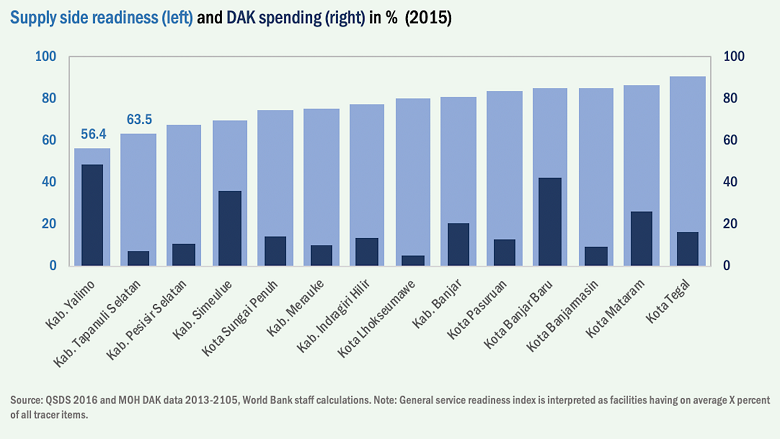Indonesia is making remarkable advance toward universal health coverage (UHC) with its national health insurance scheme, Jaminan Kesehatan Nasional (JKN), rapidly expanding coverage to 85% of its population to date. One diagnostic assessment tool that has proven invaluable in this endeavour was the
The MDTF-financed Indonesia HFSA also provided instrumental analytics for the design of vital health sector programs such as the World Bank’s new US$150 million Indonesia–Supporting Primary Health Care Reform (I–SPHERE) project. The HFSA’s main messages for Indonesia are to “spend more, spend right, and spend better” for health. Furthermore, with the support of the Australian Department of Foreign Affairs and Trade and the Global Fund, three rounds of health public expenditure reviews (Health PER) have been conducted since the HFSA was being completed in 2016–2017. The reviews continued to emphasize the HFSA messages and provide policy options to mobilize resources for the health sector given the country’s comparatively low health spending. They used analytics to guide a tobacco excise tax increase and advised capacity building through domestic resource mobilization (DRM) as a source of financing (spend more). Additionally, the Health PERs remind the country to keep putting resources into strengthening primary health care (spend right), and that improving the efficiency of program implementation by identifying public financial management (PFM) issues is essential for ensuring the quality of public spending (spend better).
The HFSA, along with the public expenditure tracking (PET) and the quantitative service delivery survey (QSDS), have informed health sector reviews of the sustainability of priority programs—including AIDS, TB, malaria and immunization which are transitioning away from external finance. Importantly, the HFSA helps key stakeholders at the Ministry of Finance, the Ministry of National Planning, and the Ministry of Health to have a comprehensive picture of the health financing situation in Indonesia that is often complex and fragmented. Consequently, the government of Indonesia has been spending more on the health sector which has reached almost nine percent of total public spending in 2018. It also increased the excise tax on tobacco and mandated that local governments use 37.5% of local cigarette tax to finance the subsidy for social health insurance premium as part of efforts to raise public financing for health. The “spend better” recommendation to strengthen linkages between intergovernmental fiscal transfers with health performance at the local level has also gained traction with the Ministry of Finance.
